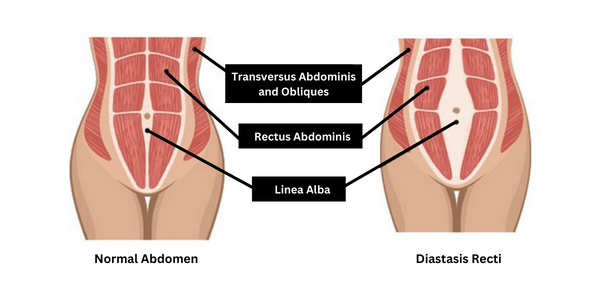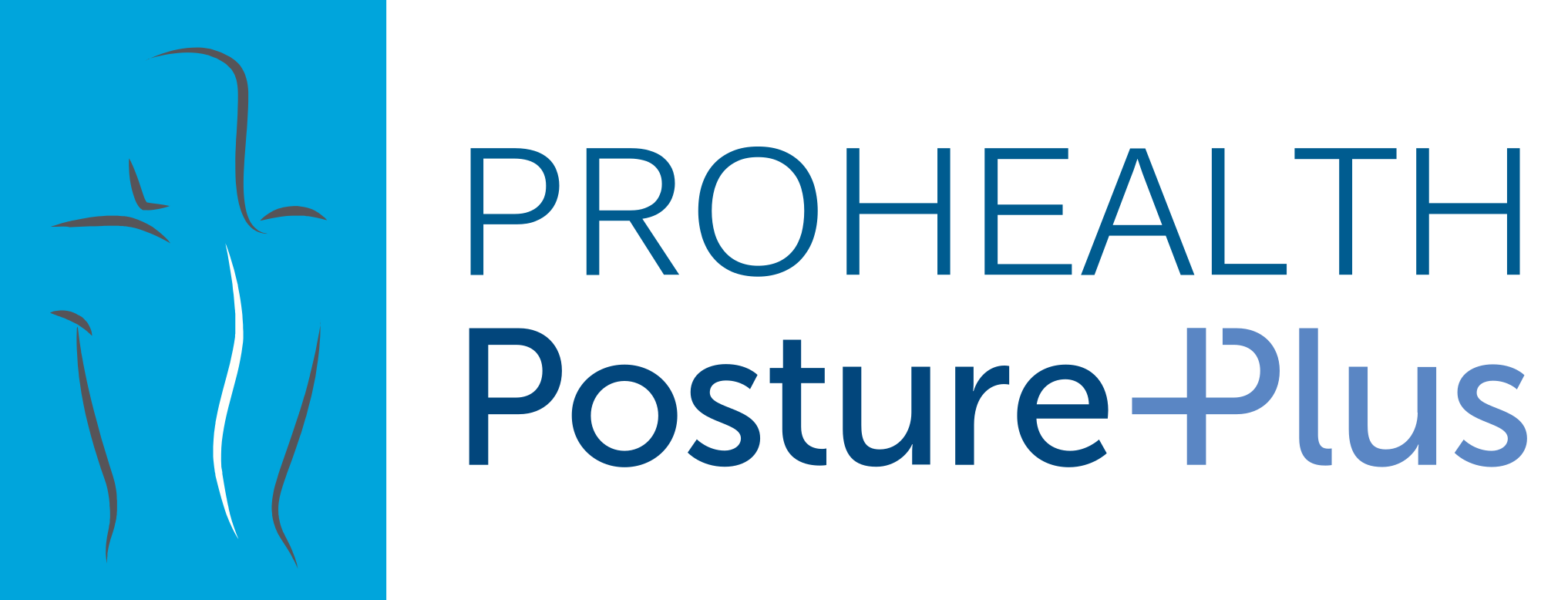
Case Study: Diastasis Recti Abdominis Muscles (DRAM) following Caesarean Section
DRAM (Diastasis Recti Abdominis Muscles), also commonly known as abdominal separation, is a natural physiological process that occurs in most pregnant women. Both natural and C-section deliveries affect the abdominal muscles and can cause postpartum Diastasis Recti.
However, the condition is more common and challenging in women who have given birth by C-section, due to the nature of the delivery and recovery.
Furthermore, taking good care of the C-section scar is vital as it can also affect your posture and have an impact on the deep abdominal (core) muscle activation.
What is DRAM?
DRAM (Diastasis Rectus Abdominis Muscles) is the separation of the rectus abdominis muscles, commonly known as the “six-pack” muscles. This condition is often seen in postpartum women due to the stretching and weakening of the abdominal muscles during pregnancy.
The separation occurs when the connective tissue (linea alba) that runs between the rectus abdominis muscles becomes stretched and weakened, causing the muscles to move away from each other.
Linea Alba is the connective tissue that joins the two sides of the Rectus Abdominis muscles, which are long parallel bands of muscles (known as the “6 pack”). DRAM happens when the Linea Alba widens and thins to accommodate the growing baby. Apart from the nature of C-section delivery affecting the Rectus Abdominis, DRAM in women is caused by an interplay of several factors:
- Hormonal changes affecting ligament and muscle elasticity
- Weakness of the deep abdominal (core) muscles
- Stretching of the muscles as the baby grows
- Condition of the abdominal wall pre-pregnancy
- Previous pregnancies
- Genetics

DRAM can lead to a weakened core, poor posture, and lower back pain. Physiotherapy can be an effective treatment option for DRAM, as it can help to strengthen the muscles and improve the alignment and stability of the core.
DRAM can also happen to men and women who have not gone through pregnancy due to the following factors:
- Excessive abdominal exercises
- Incorrect recruitment of the abdominal muscles when lifting heavy weights
- Excessive weight gain
- Connective tissue disorder causing laxity
- Major abdominal surgery
Is it ever too late to do anything about a DRAM?
For women who have given birth, ideally early intervention optimises recovery of the DRAM. However, even if a woman or man have a DRAM that was left untreated for a number of years, it is never too late to make a difference!
When assessing a DRAM, often people focus on the width of the gap between the abdominal walls. It is just as important to consider the depth of the DRAM and the tension of the Linea Alba!
Case Study from a Posture Plus Client
A 46 years old working mum had 2 children both delivered by C-section at age 40 and 41. She diligently did her post-natal exercises after both pregnancies and managed to return to pre-pregnancy weight. However, as she returned to work and the children’s needs became more demanding, coupled with sleep deprivation, she did not keep up with her exercises as much. In the past couple of years, she encountered situations where she needed to carry her children and heavy objects e.g. during moving homes and when her children had big tantrums.
6 months ago, she noticed a gradual onset of low back pain, as well as increasing tension and discomfort in the right lower abdominal region, adjacent to her C-section scar. She often felt this tension was pulling her pelvis forward and found it more difficult to engage her abdominal muscles. During her initial assessment, measurements of her DRAM were taken at the umbilicus level, 4.5cm above and 4.5cm below the umbilicus, with the umbilicus level found to be the weakest point.
Key findings were as follow:
- The width of her DRAM at the umbilicus level was 3cm which was considered significant, as a gap of 2.5cm or more is considered difficult to stabilise and requires professional intervention
- The depth at the umbilicus level was 1cm, and the tension of her Linea Alba was 80% of what it should be
- A “pouch” of excess skin fat deposits was noticeable above her incision scar, which is common for women who had undergone C-section.
When she was assessed by our Massage Therapist, the soft tissue in the right lower abdominal area was firm, dense, restricted with very little tissue pliability. It was tender to touch with visible jump sign. The superficial tissue (skin) from the C-section scar was adhered down to the deeper tissues, causing the scar to be pulled down and giving a puckered appearance. The restricted tissue hindered the range of movement in her right hip leading to excessive lumbar lordosis (arching of the lower back).
A holistic approach was undertaken to address all the above concerns. Apart from doing DRAM specific Pilates rehabilitation program, she received weekly massage therapy to address her scar tissues. She corrected her sitting posture and modified the way she carried out her daily activities. She also avoided tasks/exercises that would increase intra-abdominal pressure to prevent further stretching of the Linea Alba.
Measurements were taken over a 4 month period. Although the umbilicus level remained as the weakest point, she was still able to achieve significant results as follow:
Outcome measurements taken at the umbilicus level:
| Date | 18/07/2022 | 12/08/2022 | 16/11/2022 |
| Width (in cm) | 3 | 2 | 1 |
| Depth (in cm) | 1 | 0.5 | 0.25 |
| Tension (in %) compared to normal tension of the Linea Alba (connective tissue) | 80% | 80% | 100% |
Conclusions from the Findings
The width of her DRAM at the umbilicus level reduced from 3 cm to 1 cm, the depth reduced from 1 cm to 0.25 cm, and the tension of the Linea Alba improved from 80% to 100% normal tension.
The tissue in the right lower abdominal region became more pliable which in turn increased her pain free range of movement in her right hip.
Her posture improved resuming a normal lumbar lordosis (natural curvature of the lower back), and she no longer felt low back pain. The C-section pouch was still noticeable but significantly reduced.
It is important to manage one’s expectations that whilst there are lots of room for improvement, some aspects may not reverse completely, namely having a residual gap between the abdominal walls, and the existence of a C-section pouch. Improving the DRAM is not only about improving your appearance, it can prevent back pain and abdominal hernia (in severe cases), and will enable you to cope better with exercises or activities that are more physically demanding.
I hope this case study will inspire women out there to know it is never too late to do something about your DRAM, even years after giving birth!
Need Any Help? Reach Out to Us!
If you have been struggling with diastasis recti or any conditions particular to post-partum women, and would like further advice on treatment and rehabilitation, feel free to reach out to us!
Our team of physiotherapists are professional and experienced in working with clients of all ages. Treatment plans are always personalised to each client’s recovery needs. Working with our physios, you will receive a detailed assessment to fully understand the root cause and identify areas requiring treatment. From there, we then develop a program to help clients return to full mobility and function, with advice on exercises and activities to minimise the risk of re-injury.
Written by Sylvia Chen
Bachelor of Physiotherapy (AUS)
Registered Physiotherapist (HK & AUS)
Prenatal & Postpartum Pilates
Sylvia’s mission is to help women prepare their bodies for child birth during different stages of pregnancy, as well as help women restore their bodies after giving birth. Through Pilates Plus, the exercises include realigning the pelvis and spine, strengthening the deep abdominal (core) and pelvic floor muscles.
She recognises the importance of teaching women how to look after their bodies while caring for a new-born, as well as assist with return to work and gradual return to usual sporting activities. She has attended to prenatal and postpartum women in both maternity hospital and clinic settings. To expand her skills in the area of Women’s Health, she has completed a post-graduate training course in Women’s Health in Sydney.

